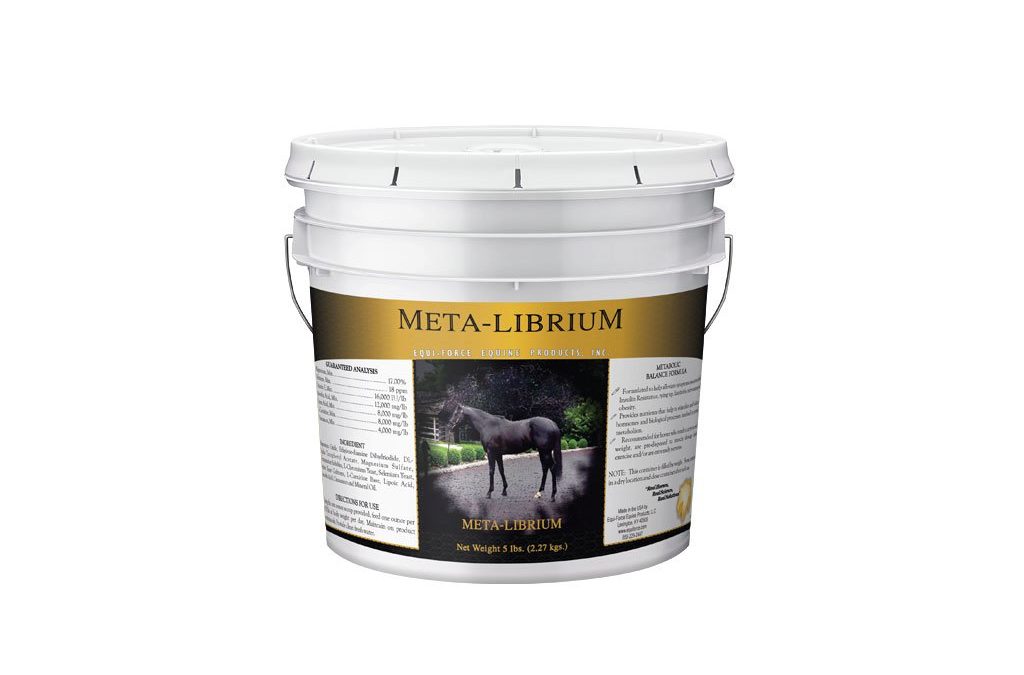Targeted Nutrient Therapy for Insulin Resistance
As discussed in our blog post series on Feeding and Managing the Overweight Equine, obesity is becoming widespread among the equine population due to better quality nutritional products and pasture management and lack of exercise. Obesity can lead to a variety of unfortunate consequences, including Cushing’s disease and insulin resistance, which must then be treated for the entirety of the horse’s life.
Increasing the amount of exercise, closely monitoring forages and grazing times, and feeding a low starch and sugar diet is necessary when working with insulin resistant horses. Another proactive measure is providing the horse with a supplement designed to help manage insulin resistance and/or symptoms that accompany Cushing’s disease. Meta-Librium™ is an example of a product specifically formulated to help control these conditions.
Meta-Librium™ contains the following ingredients:
- Magnesium
- Chromium
- Vitamin E and C
- L-carnitine
- Cinnamon
This selection of ingredients enhances the action of insulin in the horse, making it possible to reduce overall body fat content and increase the sensitivity to insulin. Individually, these ingredients are able to:
- Magnesium, Cinnamon and Chromium
-
- Regulate glucose metabolism by increasing sensitivity to insulin at the cellular level
- Vitamin E & C
-
- Help prevent free radical damage to muscle cells, are powerful antioxidants
- L-carnitine
-
- Increase fatty acid metabolism, which then decreases the presence of fatty deposits in the neck, rump, tail head, and sheath area
Due to the high magnesium content, Meta-Librium is also effective in reducing hyperactivity and anxiety in horses. By keeping the horse calm, Meta-Librium helps maintain normal muscle functions in horses that have the tendency to tie-up.
When forming a program for your insulin resistant or Cushings’ horse, be sure to keep in mind products such as Meta-Librium to use in conjunction with other proactive measures.
This blog post was originally posted on Monday, February 6th, 2012 at Equine Nutrition and Health Services Blog. Blog article was re-posted with permission from blog owner, all rights reserved.



Can you send me the complete ingredient list on this supplement please
Here’s the link to the product page for Meta-Librium. Thanks!
https://www.equiforce.com/shop/behavior-calming-supplements/meta-librium-horse-metabolic-behavior-supplement/